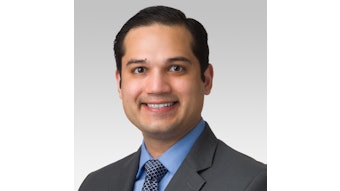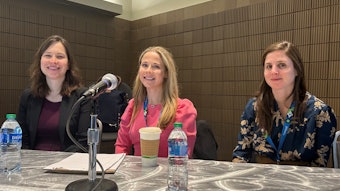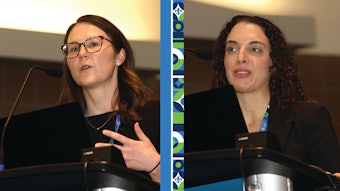The kids are alright, if you know how to treat them
Pediatric dermatology through adult eyes.

F020 – Pediatric Dermatology for the Adult Dermatologist
Friday, March 17 | 1-3 p.m.
New Orleans Theater A
Kids will be kids. Yet treating their dermatologic conditions can be challenging when the model is designed for adults.
Although many skin disorders are diagnosed in patients of all ages, some are more common or present differently in children than adults. For example, atopic dermatitis is one of the most common diseases of childhood. In addition to more typical flexural involvement, it can present with follicular prominence, in association with pityriasis alba, or with periorbital distribution in children, according to Valerie Margaret Carlberg, MD, FAAD, assistant professor of dermatology at the Medical College of Wisconsin in Milwaukee and medical director of its Vascular Anomalies Program. Dr. Carlberg is moderating this afternoon’s session, “F020 –Pediatric Dermatology for the Adult Dermatologist.”
Little creatures in a big world
“There is an expression that children are just little adults; however, we know this isn’t true,” Dr. Carlberg said. “For example, the most common triggers of allergic contact dermatitis in children differ from those in adults due to differences in environmental exposures between these unique patient populations.”
Contact dermatitis is one of several dermatologic conditions that speakers will explore during the session. Other concerns include atopic dermatitis, acne fulminans, hidradenitis suppurativa as well as unique diagnostic and treatment considerations for pediatric patients.
Child-centric approach
To help dermatologists identify and treat skin conditions in children, speakers will guide attendees through a child-centric approach for several of the disorders. The key, Dr. Carlberg said, is understanding the unique differential diagnosis for skin conditions and the challenges of treatment in this age group. Appropriately managing pediatric patients with skin disease requires a special emphasis on knowledge of natural history/outcomes and optimal treatment strategies for this population.
“There are many nuances between treatment selections in children and adults. Many of the treatments that are FDA-approved for dermatologic conditions in adults are not yet approved for use in pediatric patients,” Dr. Carlberg said. “This is primarily due to the lack of inclusion of younger patients in the initial clinical trials evaluating the safety and efficacy of a medication. Thus, treatments are often used off-label until clinical trials in children are completed. Lack of FDA approval can create challenges getting medications approved by insurance. As such, there are fewer treatment options for children.”
Dosing and medication considerations
Another challenge dermatologists must consider, according to Dr. Carlberg, is the optimal dosing and route of administration for systemic medications. Pediatric patients require weight-based dosing, necessitating medication adjustments as they grow.
“For example, dupilumab is a systemic medication used to treat atopic dermatitis,” she said. “Although there is one dosage regimen in adults, the dosing varies based on age and weight in children.”
Taking one’s medicine
Finally, another factor in managing pediatric patients with skin diseases is the fact that many children are unable to take oral pills, tolerate injected medications, or withstand diagnostic tests such as patch testing or skin biopsies, Dr. Carlberg said.
This afternoon’s session will prepare for these challenges as well as the importance of partnering with parents.
“Parents are wonderful advocates for their children and are appropriately concerned about the safety and efficacy of the treatments we recommend. Whether discussing topical steroids for atopic dermatitis or FDA-approved oral propranolol for infantile hemangiomas in young infants, both can cause unease,” Dr. Carlberg said. “Additionally, many parents consume information from non-dermatologists via social media and other platforms and this can lead to confusion. As the skin experts, dermatologists have an opportunity to partner with parents to become aligned in the same goal of improving the child’s skin.”
Visit AAD DermWorld Meeting News Central for more articles.

Click to view or download infographic from the print daily











